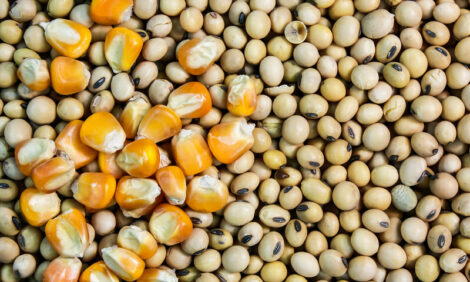



First sniffers measuring methane on dairy farms in the Netherlands
The first sniffer has been installed on a dairy farm in the Netherlands this week. It was a great moment for researcher Yvette de Haas. This farm is one of the 100 farms on which methane and CO2 concentrations will be recorded over the next two years.“After a long period of preparation, we have finally started collecting data that will form the basis for developing a new breeding value for methane.”
In this research, which forms part of the public-private partnership (PPP) Climate Smart Cattle Breeding, researchers from Wageningen Livestock Research are working with CRV and FrieslandCampina to lower enteric methane emissions through breeding.
“We are all facing the major challenge of drastically having to reduce methane emissions,” Yvette de Haas says.
A range of measures has already been developed for this, mostly focussed on the relationship between nutrition and methane.
“Less is known about the relationship between breeding and methane,” De Haas points out. “And yet this could be a very interesting strategy,” she adds.
Previous research based on measurements at 15 farms has shown that there is an important genetic component to this.
“Our first analysis is showing heritability for methane emissions of around 20 percent,” De Haas notes. “This certainly offers potential for the future for reducing methane emissions via selective breeding.”
Measuring on 100 farms
Over the coming months we will be installing sniffers on 100 farms. To gain a good overall picture, it is important to obtain information from a large number of individual animals. By taking measurements at 100 farms we will obtain information on more than 10,000 cows. The pedigree and DNA of these Holstein cows are known via the genotypes. All measurements take place in the milking robot, which enables information to be collected on each cow individually during milking.
“In practice, this means that with three milkings per day, 365 days per year, we will obtain around 1,000 measurements per cow per year. We don’t take measurements from cows in her dry period,” De Haas adds. “Because we will be taking measurements over a long period of time on each farm, we will not only obtain very large amounts of data, but we will also get a picture of the differences caused by factors such as weather conditions or changes in rations over the seasons.”
For now, all the data is being collected on the participating farms and uploaded directly to a central cloud. De Haas: “We are currently working on developing an app. Participants will then be able to visualise their own measurements on the app and also share information with us. For example, they could report that they have started feeding a different ration or that they have put the cows out to pasture. This is valuable additional information for our research.”
Breeding value for methane
In the short term the research will mainly focus on collecting the right information. The next step will then be the analysis.
“I am glad that we have finally started now. We are bound to encounter the odd bump along the way to begin with, of course. But ultimately we expect to have enough data in two years’ time to be able to produce a reliable breeding value for methane,” De Haas concludes.



